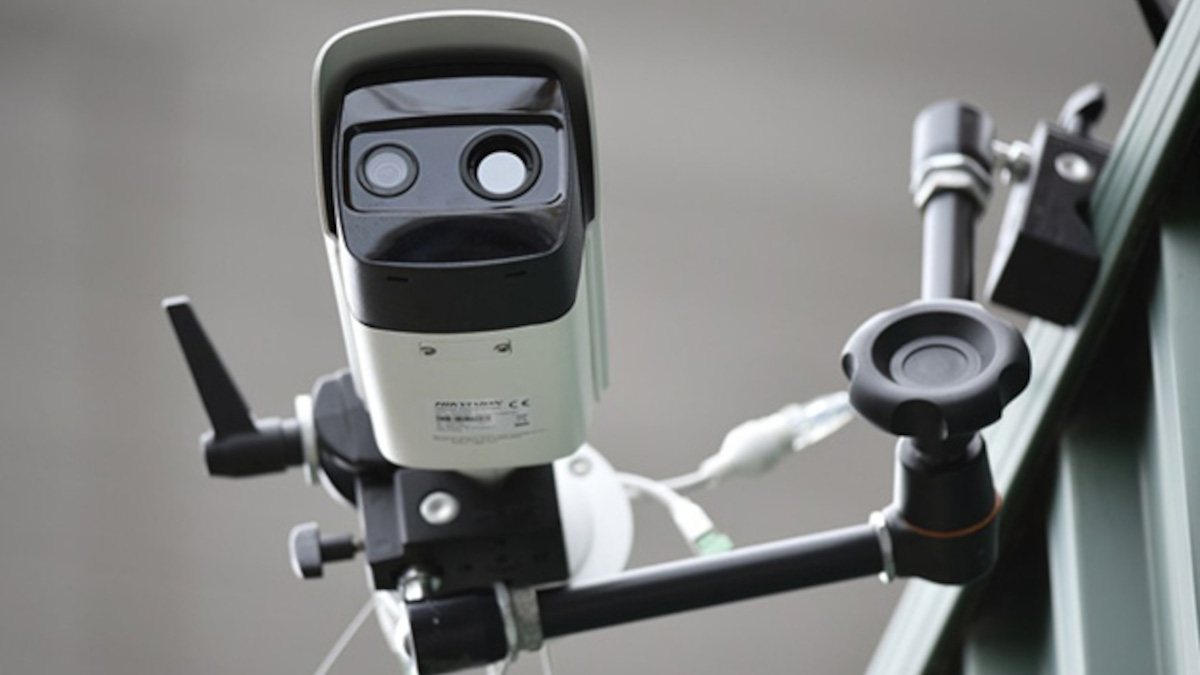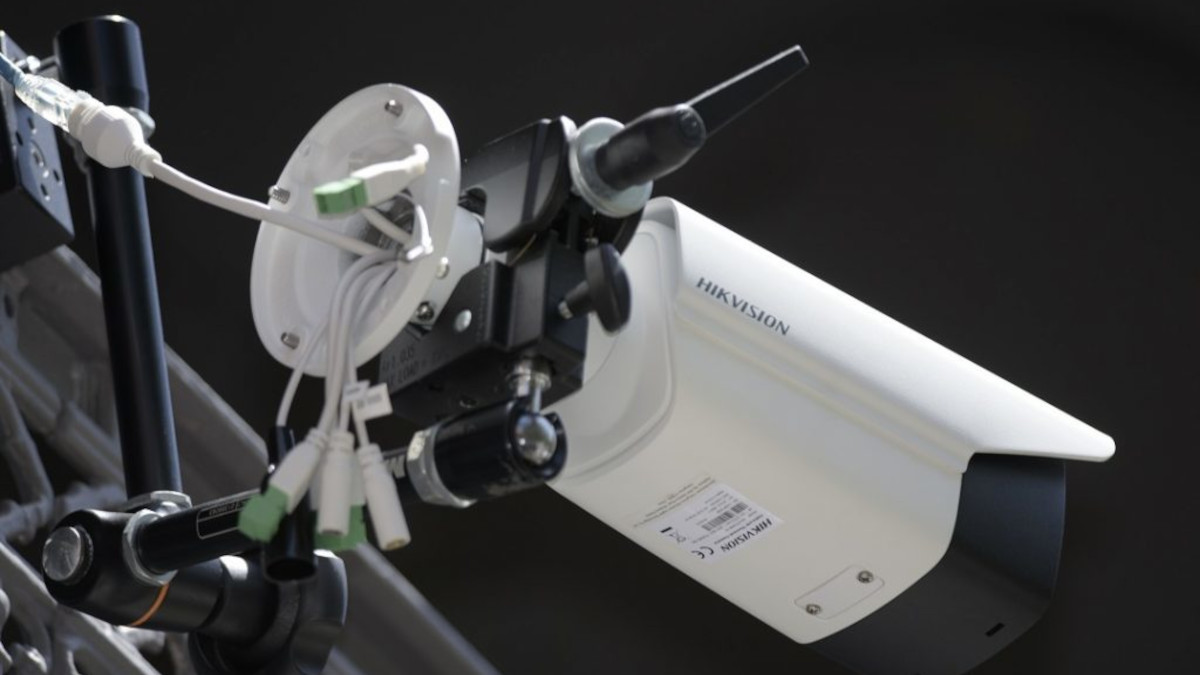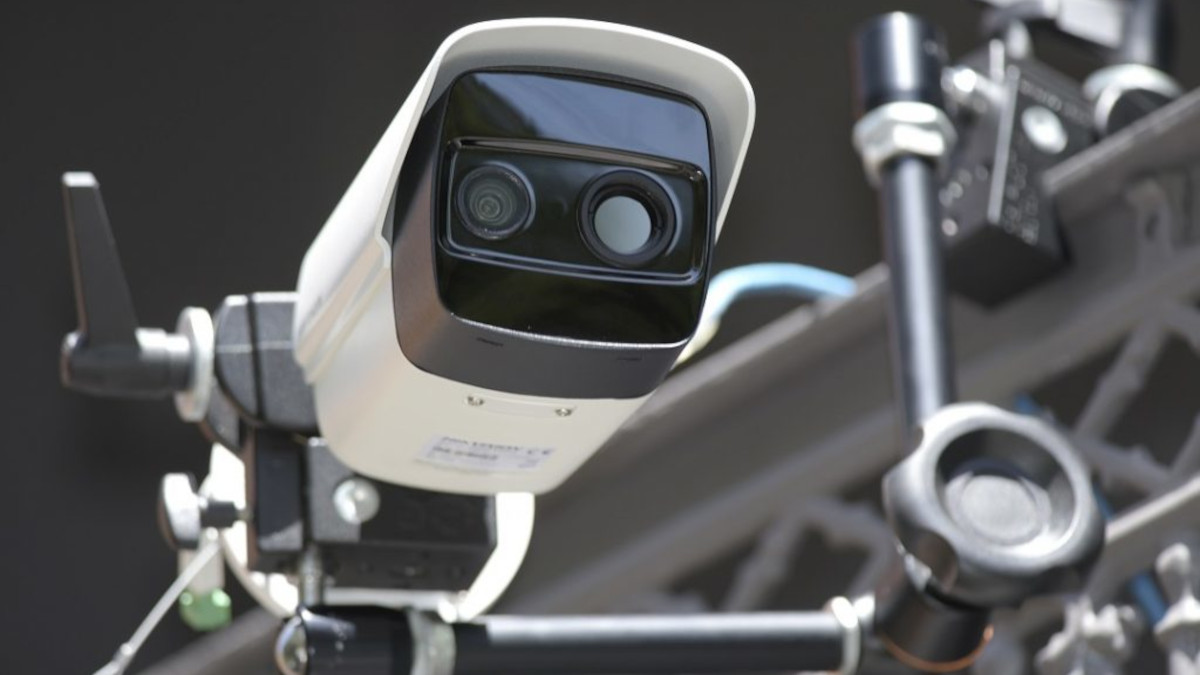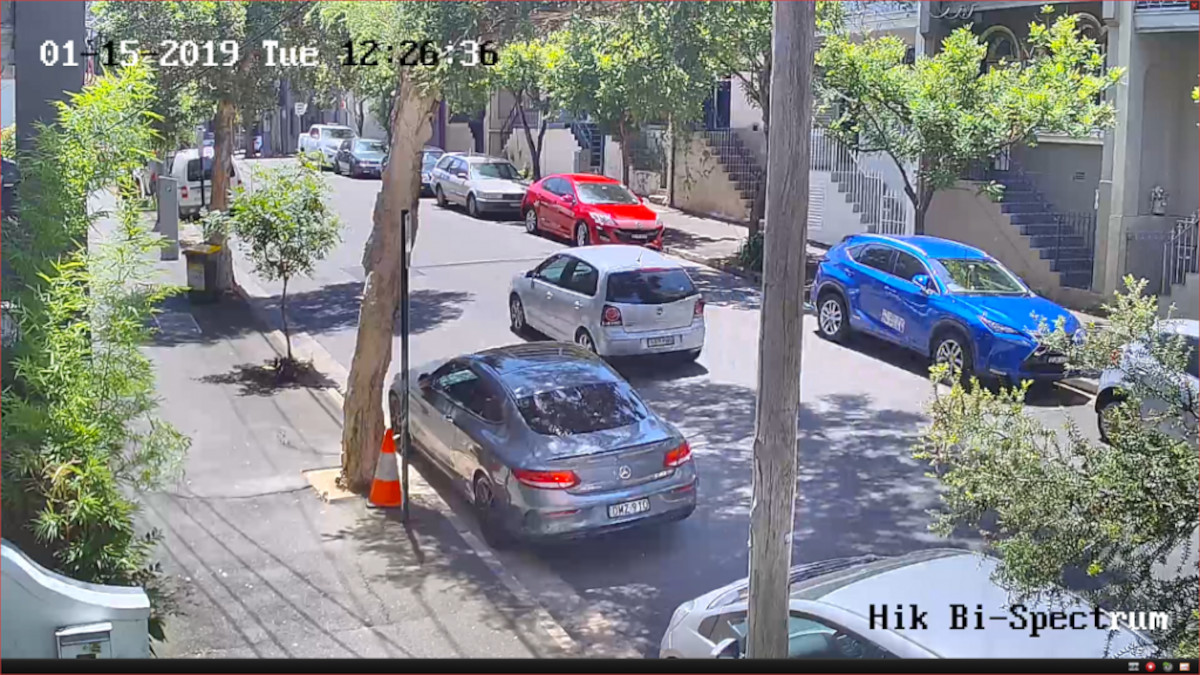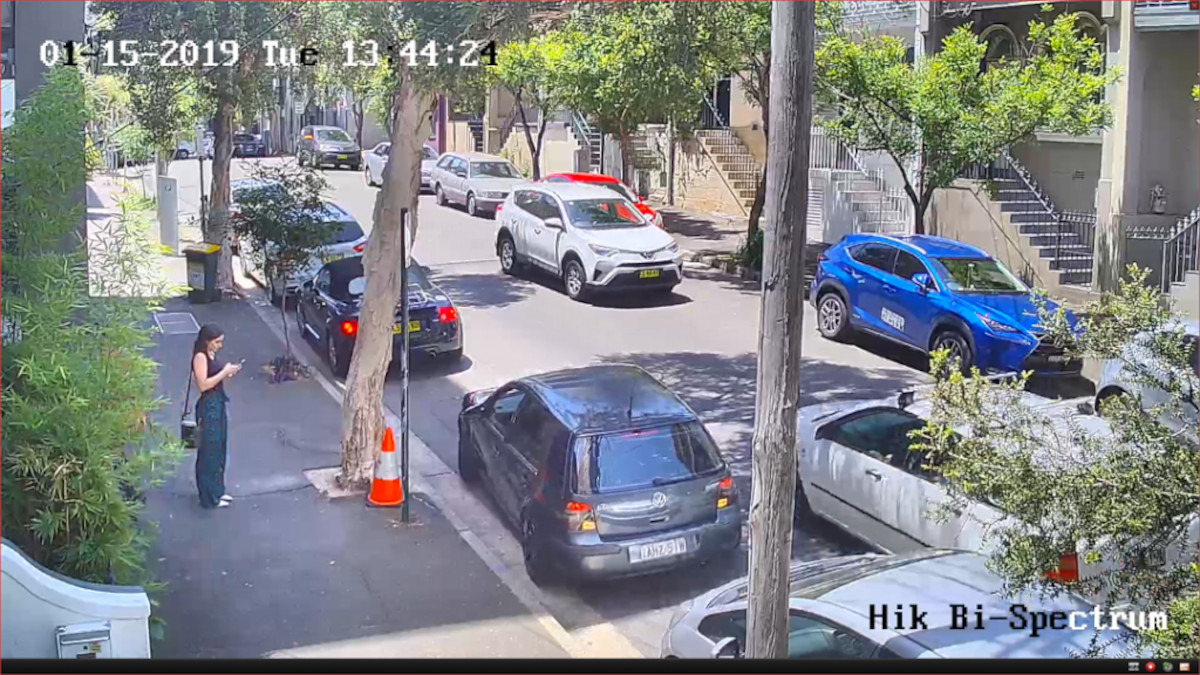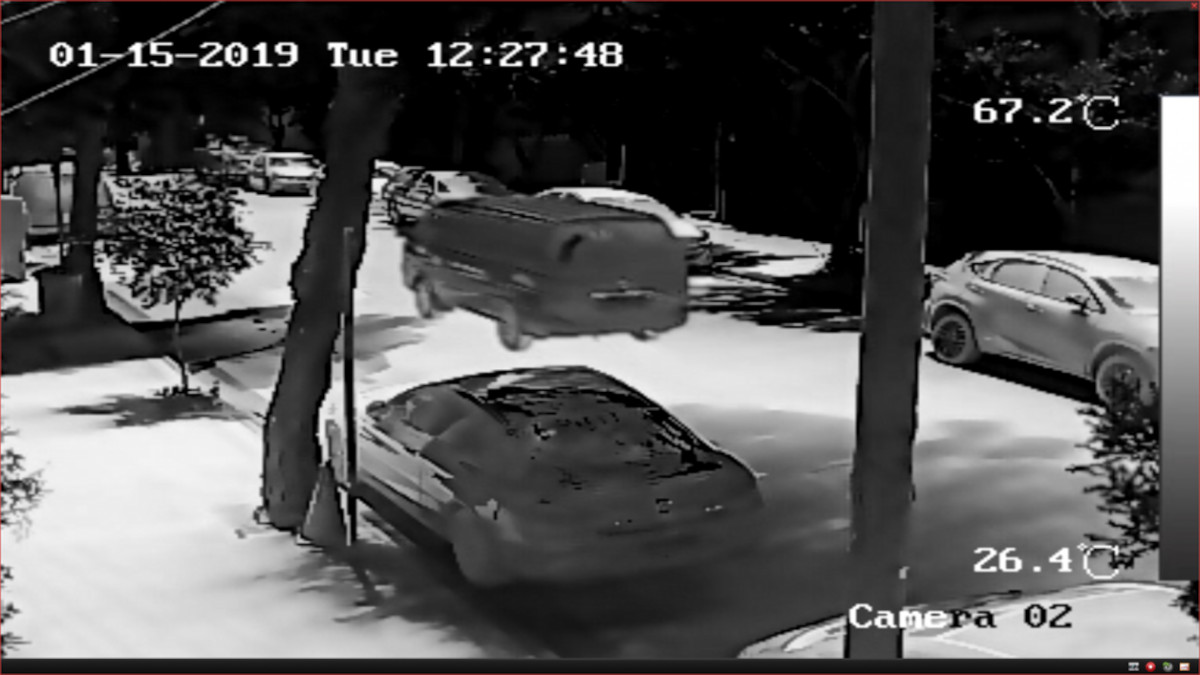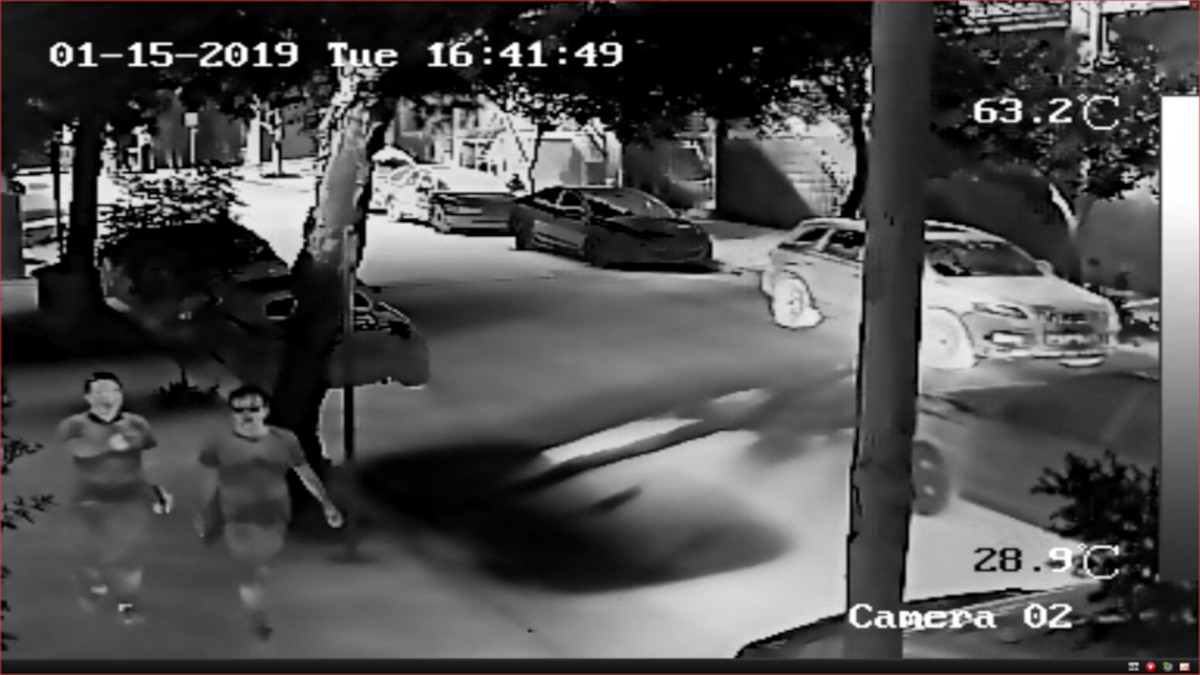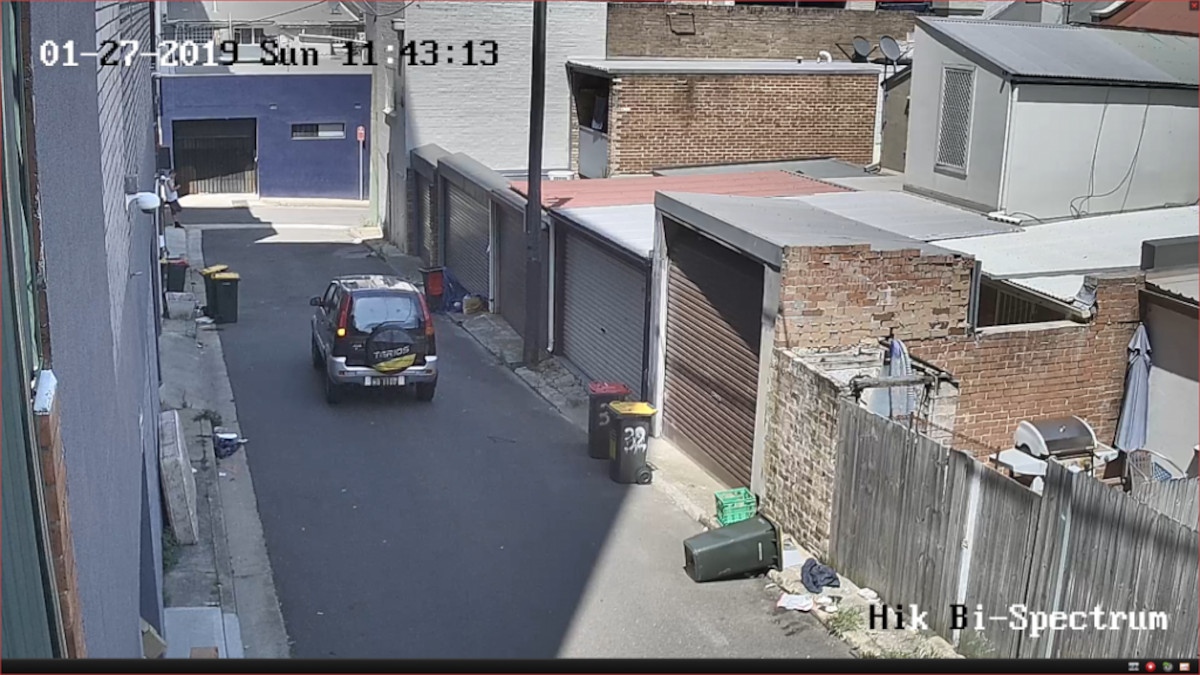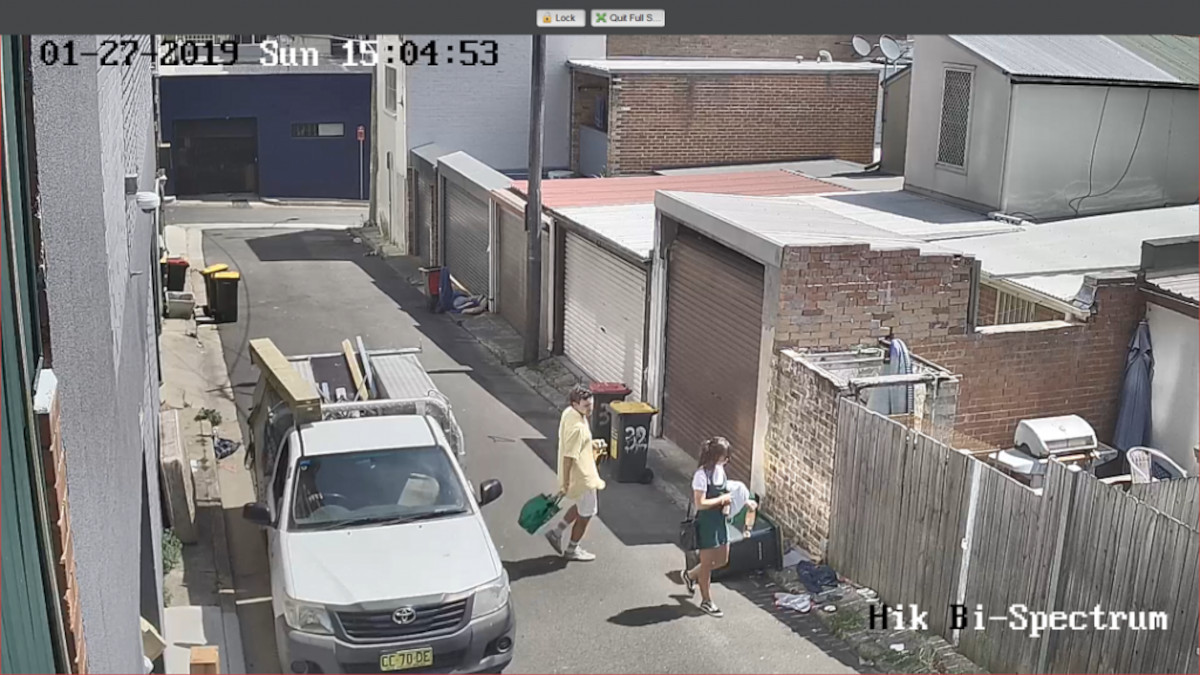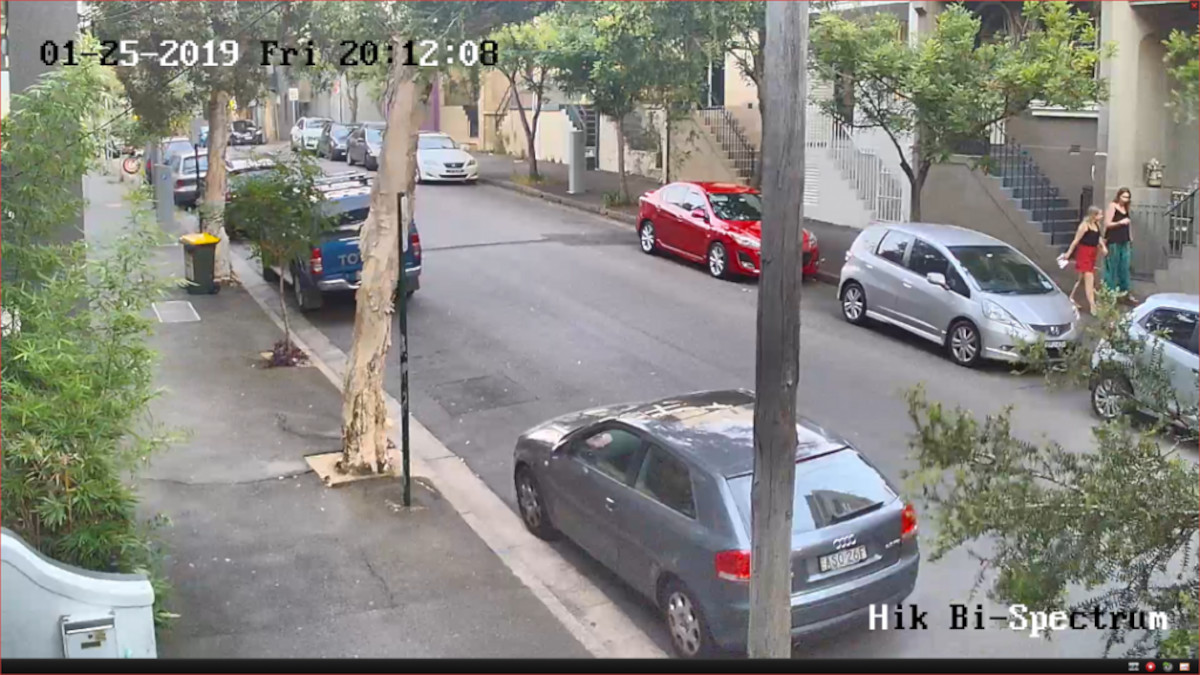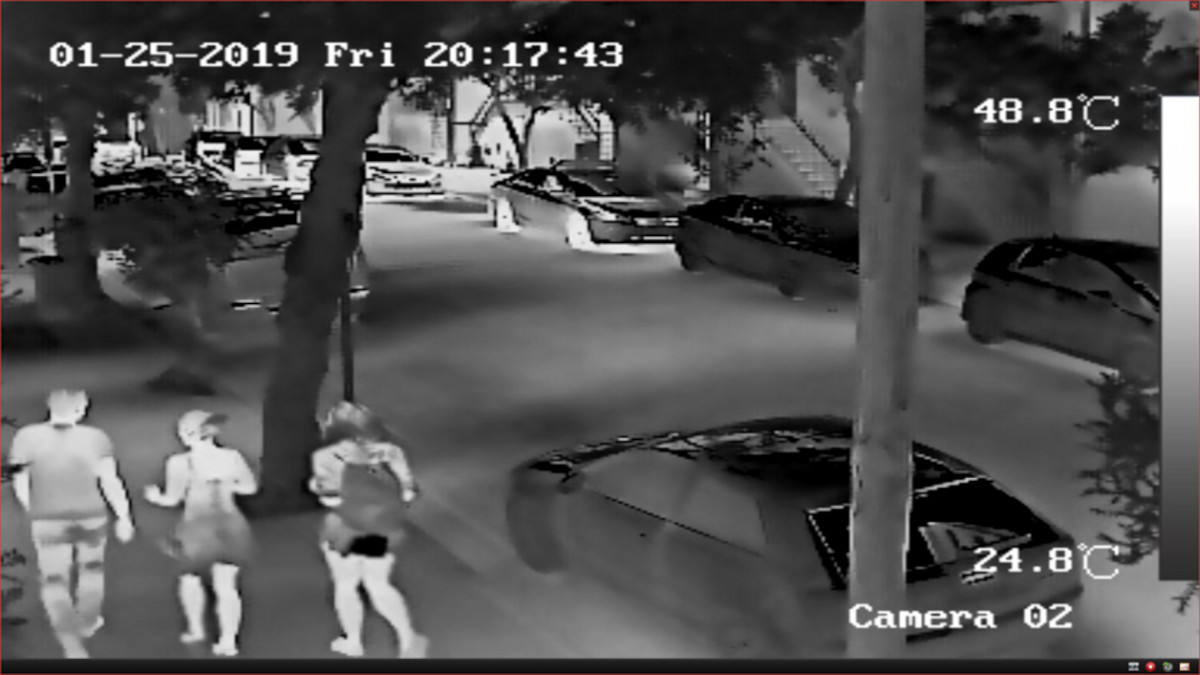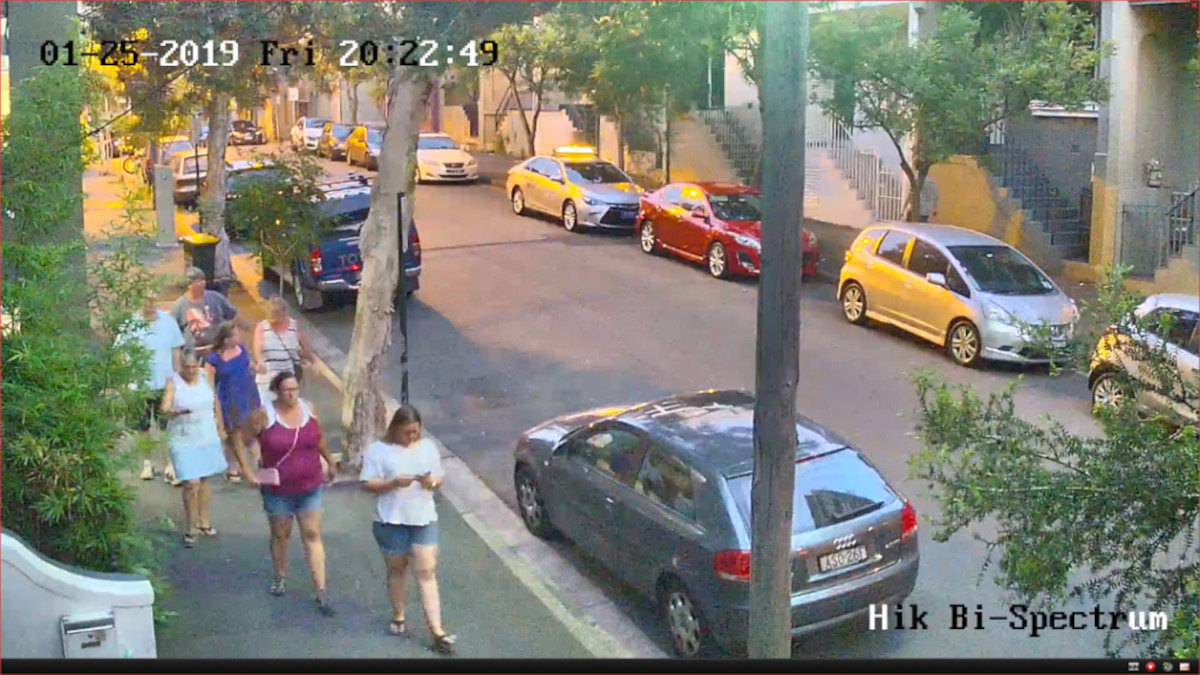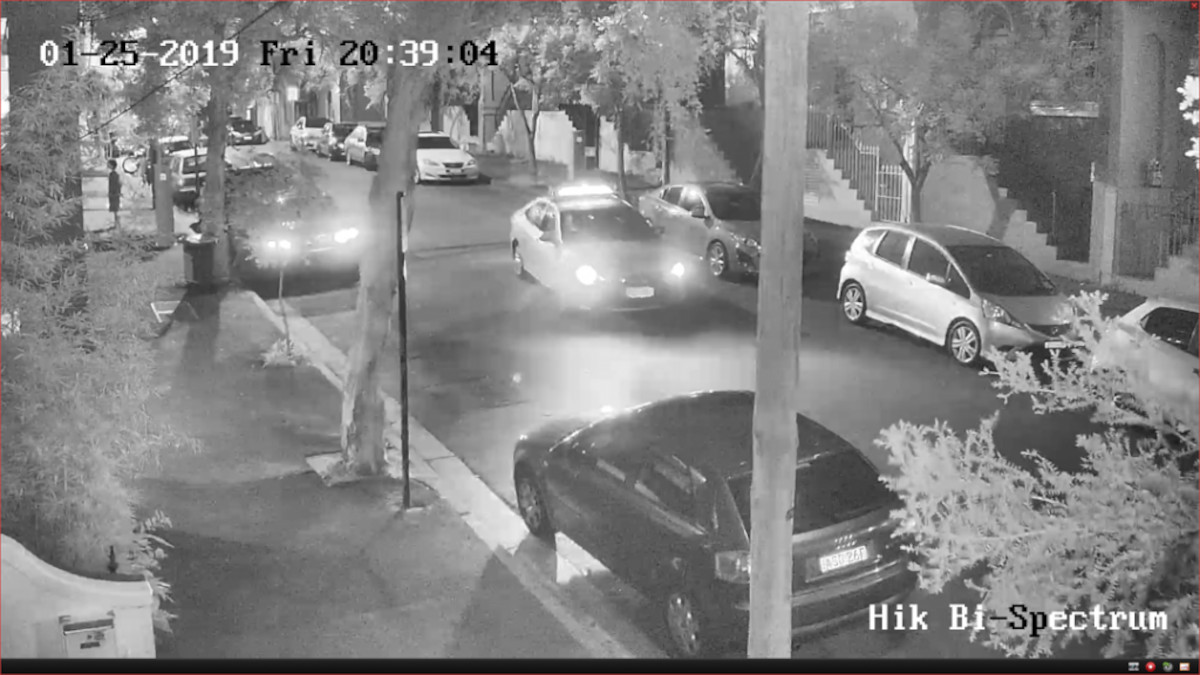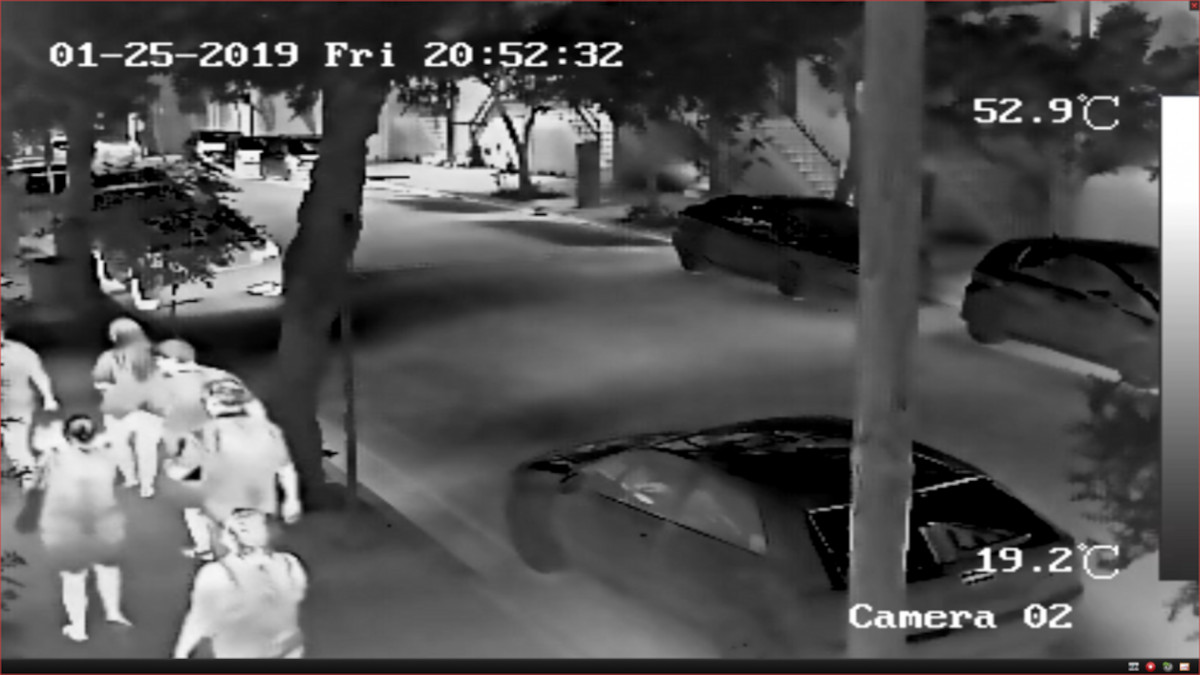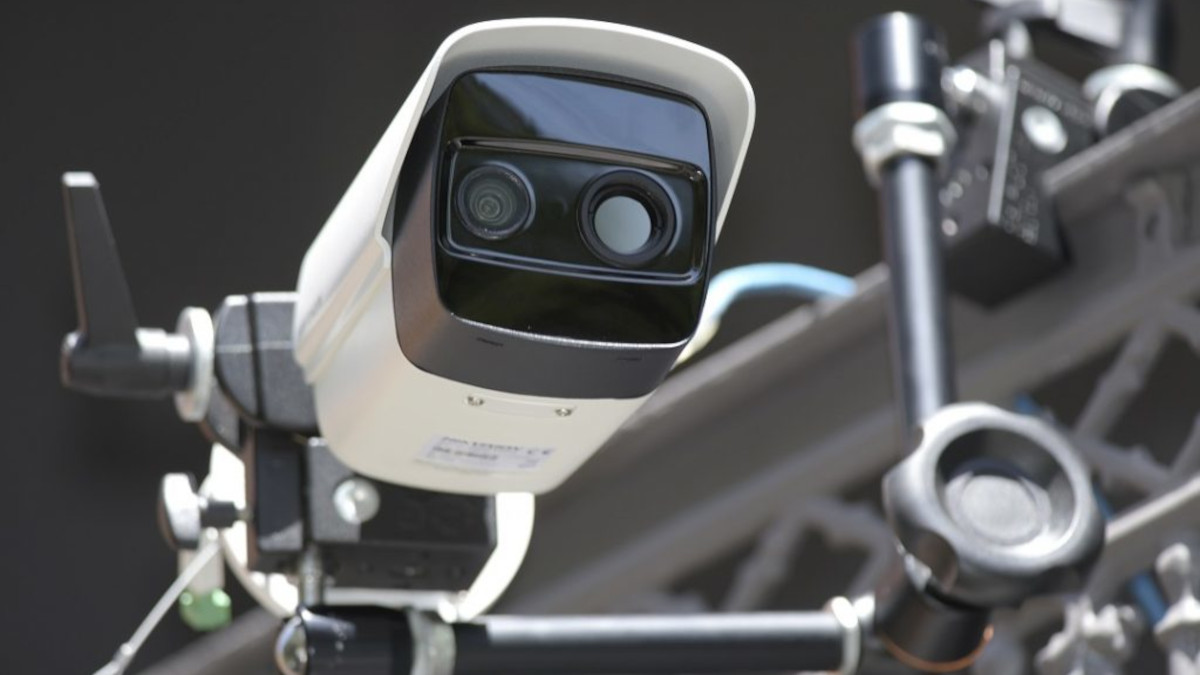Hikvision DS-2TD2615-7/10 Bi-Spectrum Bullet Camera Review
Contents
Hikvision DS-2TD2615-7/10 Bi-Spectrum Bullet Camera Review — This bullet camera is a fascinating combination – an IR-supported 1080p optical camera teamed up with a 160 x 120-pixel thermal camera in a robust IP66-rated bullet housing.
Testing the Hikvision DS-2TD2615-7/10 Bi-Spectrum Bullet Camera was a journey of discovery thanks to aspects of its underlying design. This is a camera with thermal side and optical sensors which outputs an optical and a thermal stream for viewing. However, the thermal stream is blended – there’s some optical data added in order to increase the level of detail. It took me a while to get my head around this – the threadbare details are there in the specification, but they’re not front and centre.
Instead, I got a sense of a thermal sensor whose performance belied its low resolution, especially during the day. It wasn’t until nighttime, when thermal details started ironing out, that I felt something unexpected was at work.
My settings for this test are variable bitrate, highest quality, WDR on, P-frame with I-frame set to 50, standard H.264 compression, a maximum bitrate of 4096 at full frame. The optical and thermal cameras have fixed lenses – in the case of the optical camera, the focal length is 6 mm, though 8 is available.
Hikvision DS-2TD2615-7/10 Specifications
Let’s look at the specifications before we get lost in the performance. The Hikvision DS-2TD2615-7/10 Bi-Spectrum Bullet Camera, Thermal and Optical Bi-Spectrum network bullet camera uses a vanadium oxide un-cooled focal plane sensor with a noise equivalent temperature difference of 50 mK (milli Kelvin), which is said to enhance thermal image quality.
This sensor has a 160 × 120 pixel thermal/1080p optical resolution and features contrast adjustment for optimised images. The quirky combination going on in that sentence is because the 160 × 120 thermal and 1080p optical sensors are combined in some way to deliver a 320 x 240-pixel image output for viewing at 50fps.
Test-driving the Bi-Spectrum Bullet
When it comes to analytics, there’s Adaptive AGC, 3D DNR, Dynamic Detail Enhancement, on the thermal side. Same as any thermal-enabled sensing solution, analytics are a valuable addition that gives security managers a great deal of functionality. Analytics including line crossing, intrusion, region of interest, entrance/exit, temperature exception, advanced fire detection, temperature range from -20 to 550C, IP66-rated and a current draw of 20W with de-icing heater using 24V AC.
Meanwhile, the 1080p 1/2.8-inch progressive scan CMOS sensor has a minimum illumination in colour of 0.002 lux (the camera changes over to night mode well above 10 lux in our test) at F1.5 with AGC on. Minimum illumination in monochrome is said to be 0.0002 lux with the same settings, but auto IR in night mode means we don’t see such miraculous performance in our test. The F1.0 aperture 6 mm lens delivers an angle of view around 53 degrees with a height of 30 degrees. The hyperfocal distance is around 1 metre.
The optical side of the camera also has smart analytics including line crossing, intrusion, region entrance, and region exiting and 8 VCA rules per scene. There’s also temperature measurement and 10-point dynamic fire detection, which is funnelled across to the optical view from the thermal camera. The Integrated IR range is 40 metres.
Video compression options are H.265+/H.264+ (baseline/main/high profile) and H.265/H.264/MJPEG, while audio compression is G.711u/G.711a/G.722.1/MP2L2/G.726/PCM. There’s simultaneous live view of up to 20 channels, up to 32 authenticated users, MAC address binding, HTTPS encryption, IEEE 802.1x access control and IP address filtering.
On the integration side, there are 2 inputs (0 to 5 VDC) and 2 outputs with alarm response actions configurable. There’s also alarm action SD recording/relay output, smart capture/FTP upload/e-mail linkage, an audio input, microSD/SDHC/SDXC card support up to 128 GB, an analogue video output, and application programming via an open-ended API. With support for ISAPI, Hikvision SDK, and third-party management platforms. The client is iVMS-4200, which we are using for this test.
The combined camera sensors have been tested against the Johnson Criteria for human and vehicle detection. Hikvision’s spec suggests initial detection is possible at up to 600 metres, general recognition of intruder type (vehicle or human) at up to 150 metres, and closer identification of details between 18–77 metres.
Optimised to meet the Johnson Criteria, the camera will recognise a human form at up to 160 metres and a vehicle at up to 280 metres. Temperature exception range (5 × 5 pixels) is available to a maximum of 160 metres, while advanced fire detection (2 × 2 pixels) extends to a maximum range of 400 metres – pretty solid performance for external or industrial applications.
When it comes to physical specifications, this camera has solid build quality. The temperate range is -40 to 65 C, there’s IP66 rating against dust and water, TVS 6000V lightning protection, surge protection and voltage transient protection. The camera is 314 mm long x 104 mm high x 104 mm wide and weight is 1.55 kg.
Hikvision DS-2TD2615-7: First Impressions
First impressions are positive – there’s a lot to like about Hikvision DS-2TD2615-7/10 Bi-Spectrum Bullet Camera. Looking at the optical camera first, key areas like colour rendition, depth of field and the ability to handle variable light are all strengths. Performance against backlight is particularly noticeable as the afternoon goes on.
There’s beautiful colour rendition with 75,000 lux backlight, but I can’t grab a moving plate, even under 20 metres. I noticed later in the lane test that at 10-15 km I can get a plate out to 12–16 metres – it’s motion blur caused by speed of movement that’s denying me a plate out the front.
Hikvision DS-2TD2615-7/10 Bi-Spectrum Bullet Camera -the fixed 6 mm lens and 1080p resolution mean there’s some underlying pixel spread in my scene, but depth of field is strong and over time I realise DoF is a strength of this camera.
I can see details of pedestrians all the way down on Albion Street – the colour of clothing and handbags, as well as vehicle types. Something else I notice is a 3-second stepping of the image – it’s quite consistent throughout the day. There’s also some background noise in the scene, yet support for face recognition is comfortably out to 12 metres – this processing noise is characteristic of the camera engine.
Hikvision DS-2TD2615-7: Thermal Sensor
The thermal sensor has a 7 mm fixed lens and combined with the 160 x 120-pixel resolution, you’re not getting huge detail. What you do get is the ability to see motion at night all the way out to the end of this scene – that’s about 100m. You also get the ability to detect events, including fire events. The thermal camera’s temperature detection is highly discerning and can be set to detect any temperature between -20 and 550C – that’s an excellent capability regardless of your application.
In my initial test, it’s around this point I got a sense there’s something unusual going on with Hikvision’s Bi-Spectrum bullet. There’s more detail than I was expecting and on the thermal side, especially close to the camera. Later on, I discovered that’s because the 160 × 120 thermal and 1080p optical sensors can be combined by the processing engine to deliver a 320 x 240-pixel image output for thermal viewing.
According to Hikvision, the Spectrum Image Fusion Thermal view “can be overlaid with optical channel details to increase levels of detail”. How this works, I don’t know. Detail is low-res thermal murky, but it’s there 24-hours a day. Even though resolution is quite low, I wouldn’t like to underrate the potential of this vanadium oxide/optical sensor combo as an investigative tool thanks to its capacity to deliver contrast.
It’s possible to make out considerable detail of pedestrians inside 12 metres. Facial hair, hats, glasses, clothing style, gait, the presence of bags, cigarettes, shoe types, gloves, etc. Even fundamental elements of facial structure can be readily discerned. I also get a good sense of vehicle type and sometimes make, whether the vehicle is still hot from use.
Is this sort of detail useful in a camera with IR support on the optical side? Well, yes, it is — especially at night when the contrast between warm humans and the now colder background may increase contrast, though it must be borne in mind that the cooler the background, the hotter the human will appear. And I find later that there’s a point at night where all faces start to appear completely white with no few details.
“Smart features like line crossing, intrusion, region entrance/exit, temperature exception and advanced fire detection really come into their own with thermal sensors.”
Thermal is useful during the day. Even when the ambient daytime temperature hits 31C, I’m still pleased with the performance of the thermal camera, which is picking up bits and pieces I might miss optically, especially in the deep background.
For security managers squeezing every drop of data out of their security solution during an investigation, affordable low-resolution thermal is worth having. Something else that’s neat about thermal is the way it delivers dependable data to analytics functions. Smart features like line crossing, intrusion, region entrance/exit, temperature exception and advanced fire detection really come into their own with thermal sensors.
Hikvision’s Bi-Spectrum: WDR Performance
Optical performance during the afternoon is solid. The fixed lens exhibits no chromatic aberrations. The camera is strong against WDR. There’s no loss of depth of field and colour rendition stays well-balanced. Something I do notice is that much later, as the colour temperature of light changes with the sinking sun, I get yellowing of the light at the end of the street. The overall image stays balanced in terms of light and dark, but the effect is distinct with my settings.
Another day in the lane, I noticed the same effect and revisited my settings – I have brightness on 8 and when I take it back to 6, the effect disappears though the shaded parts of the scene are a touch darker and the overall image shows lower contrast.
By around 830pm it’s quite dark out front but twilight at the rear of the office, and over the next 10 minutes we go to full night front and back. I measure 7 lux under the camera out in front of the office – it’s sub 2 lux out the back.
The switch from day to night mode comes suddenly. I’m viewing the monitor and the image turns pink for 2–3 seconds as the cut filter comes across, and we then go straight over into monochrome. Usually, I hit a snapshot to capture the transition, but there’s no time for that with the Bi-Spectrum Bullet.
And because the change takes place relatively early in the camera’s low light ability in colour, there’s none of the slow degradation we’ve seen with other cameras, no increase in noise or strange colour tones.
Bi-Spectrum Monochrome and Low Light Performance
In monochrome, depth of field is as solid as it is during the day – it’s a great argument for a slightly longer focal length. Control of blooming with this camera is forceful. The noise, which was prevalent throughout the day, never increases. With this noise, it seems Hik engineers are making a trade-off between noise and amplification around moving objects, and in the live streams this trade-off seems to be worth making. From front to back of the scene, this camera delivers more detail in extremes than a typical 1080p camera.
Later, while trawling the specification sheet, I came across a piece of functionality called Dynamic Detail Enhancement. Is this what we are seeing? I think it probably is. There’s some blur behind moving objects, but then momentarily they are almost entirely clear. I decided this can’t be down to movement – there’s some element of processing going on – some form of buffering.
There’s a simplicity to monitoring thermal images – you’re searching for simple changes in contrast, and letting your mind wander seems to make the process of spotting movement easier. The depth of field in monochrome optical remains outstanding, and it’s very easy to see anything moving. You notice warm things you hadn’t thought of – the disc brakes of bicycles, the tops of hats.
Technical Section
- 160 x 120 Thermal/1080p Optical Resolution
- (320 x 240 Output Image Resolution)
- Vanadium Oxide Un-cooled Focal Plane
Arrays - 7 mm and 10 mm Lens Options
- NETD <50 mK
- Adaptive AGC, 3D DNR
- Dynamic Detail Enhancement
- Smart Features:
- Line Crossing, Intrusion, Region
Entrance/Exit - Temperature Exception
- Advanced Fire Detection
- Temperature Range: -4° to 1022° F
(-20° to 550° C) - Temperature Accuracy:
Maximum (±8° C, ±2%) - IP66 Protection
- 24 VAC, 10 W (20 W with De-icing Heater)
| USER MANUAL | DS-2TD26/35/36 Series Quick Start Guide |
| DATA SHEET | DS-2TD2615-7/10 Data Sheet Technical Info |
Conclusion
This observation is getting repetitive now, but there is something unusual about this camera, which is probably why Cecil from Hikvision sent it over. It’s the combination of colour, IR support for the monochrome, optical details that can be added to the thermal viewing stream. These qualities don’t explain the nature of the depth of field – the camera is 1080p and the focal length is long-ish as these things go, but only slightly at 6 mm. Overall, this is a good camera. It offers solid situational awareness across a range of conditions and rewards the active engagement of operators.
In optical monochrome, I get a lot of detail in low light, even if faces are not sharp. I’m getting clothes, bags, and other detail way out past 30 metres on both sides of the road at once out in front of the office. Performance is also solid in areas like colour rendition and an almost complete lack of blooming, even under strong provocation.
Depth of field is a constant benefit. Meanwhile, the thermal at night has less in the way of detail than it does in the day. It is about deciding someone is there, particularly at the outskirts of depth of field and understanding what they are doing in relation to other humans and vehicles in the target area.
The Hikvision DS-2TD2615-7/10 Bi-Spectrum Bullet Camera is a powerful tool for enhanced situational awareness. It excels in low light conditions, providing clear details of objects beyond 30 meters. While the thermal capabilities are slightly less detailed at night, they still serve their purpose of detecting human presence and activity. With impressive color rendition, minimal blooming, and a reliable depth of field, this camera is an excellent choice for operators seeking reliable performance.
For more information about Hikvision and other products, visit their website and stay updated with SEN news.
“Overall, this is a good camera. It offers solid situational awareness across a range of conditions and rewards the active engagement of operators.”
Does the device come with a warranty?

Yes, the device comes with a 3-year warranty.






